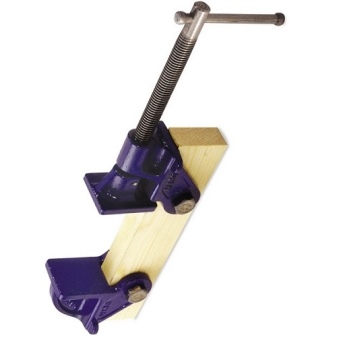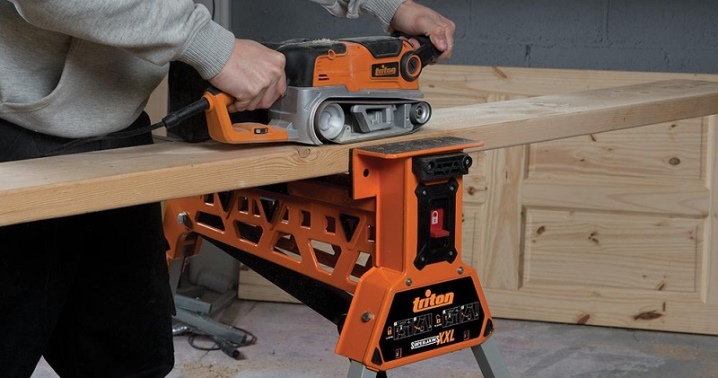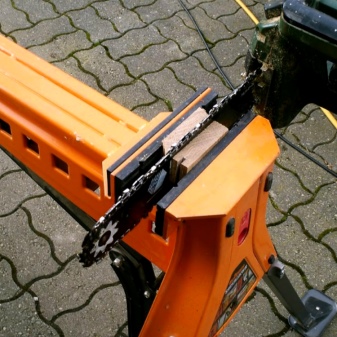All about the joinery vice

Carpentry tools are designed for wood processing. There are various types and models that are divided according to purpose. This article will discuss the features of the joinery vice, their varieties and selection criteria.


Peculiarities
A vise is a device that is used when fixing parts. The tool provides rigid fastening of the part and allows you to stay at a safe distance from the processing area.
A carpentry vise is a mechanism that is attached to a surface with screws.... The device is used when working with wood or plastic products. Paws for fixing workpieces are equipped with special overlays, which eliminates damage to the workpiece material. Some devices have wood trims. There is also a combined version of overlays - made of wood and cast iron.
The mechanism of the joinery vice consists of:
- the main support responsible for the operation of stationary elements;
- movable foot for fixation;
- two wings, with the help of which the arrangement of parts is changed;
- lead screw;
- wrench - an element that transmits rotation to the lead screw.
The body of the device itself is usually cast iron. Some joinery vices are quite massive, and their weight can exceed 17 kg. In this case, the value of the width of the fixing legs is also significant - about 22 cm and more.

Such oversized devices are used to process parts on a workbench. The optimal size of the jaws for a joinery vice is 12 cm. Joinery devices can also be made of hard wood. As a rule, these are oak, ash and beech. It should be borne in mind that carpentry tools are not used for working with metal. If too stiff garments are clamped, the locking tabs may be damaged.
The main advantages of the joinery vice:
- different options of fasteners - the tool can be fixed both on the bench surface and on any other;
- during processing, reliable fixation is carried out, the workpiece will not slip out and will not change its position;
- the spring mechanism makes it possible to facilitate the clamping of bulky wooden parts;
- the design assumes the use of replaceable slats on fixed and movable legs (replacement of slats depends on the workpiece used, while there are universal slats made of steel and polymers).

Views
There are several types of vise for woodworking.
- Screw. The mechanism is a device with a lead screw. A trapezoidal thread runs through the entire length of the structure. The work process is carried out by rotating the handle on the outer part of the vise.


- Quick-clamping. A lead screw passes through the part. The part itself has a spring mechanism and is movable in the transverse direction. When this element is pressed, the lead screw comes out of the stopper and moves freely without rotation.

- Longitudinal carpentry yews. This type of tool is also called parallel clamping. The device consists of several fixing legs, which are made of wood. The legs are connected with a pair of long screws.

- C-clip... C-shaped mechanism with adjustable clamping screw.

- F-shaped vise. Vise with one-sided clamping mechanism. Some models are equipped with a special stopper for quick fixing of one of the parts.

- Angle vise view has a flat base with clamps that are perpendicular to each other.The device is used when gluing wooden parts.


- Clamping vise. This type is similar to a clamp, which is fixed to the workbench and presses the workpiece against the work plane.


Model overview
Opens the list of joinery models workbench vice Groz WWV-150. Specifications:
- the device is completely made of ductile iron, which will ensure reliability and maximum service life;
- polished surface, which is responsible for smooth running during processing;
- steel guide pins ensure the parallel precision of the workpiece;
- the width of the fixing legs is 15 cm for a secure clamping of the product;
- for fixing wooden plates, the tool is equipped with threaded holes, which protects the tool itself and the workpieces used;
- working stroke - 115 mm.

Vise of the American manufacturer Wilton WWV-175 65017EU. Peculiarities:
- clamping feet consumption - 70 mm;
- distance between legs - 210 mm;
- the tool is used for processing large parts;
- smooth surface of the legs eliminates deformation of the workpieces;
- the undercarriage has two guides and a clamping screw;
- frame structure with special holes for fastening to the surface;
- smooth running during work.
The disadvantage of the model is the lack of a rotary mechanism.

Vice "Zubr Expert 32731/175". Features of the model:
- fast and reliable fixation;
- clamping screw with trapezoidal thread, which speaks of the strength and durability of the mechanism;
- smooth rectilinear course of two guides;
- the possibility of fastening to the workbench using hardware;
- the legs are equipped with special holes for replacing the linings;
- legs width - 175 mm;
- lack of backlash.
The disadvantage of the device is the presence of a large amount of grease.

Triton SJA100E stand vise. Specifications:
- equipment mobility;
- the ability of fastening dimensional workpieces;
- the clamping mechanism is equipped with a foot drive;
- manual spreading of the legs;
- the ability to work without attachment to a workbench or to any other surfaces;
- large working stroke;
- the width of the legs - 178 mm;
- folding legs;
- the tool is equipped with a swivel mechanism.
The disadvantage of vices is their high cost.

German vise Matrix 18508. Features:
- the presence of a fastening clamp that provides attachment to any surface;
- adjustment of the desired angle of inclination when processing a part;
- rubber pads on the fixing legs;
- replaceable nozzle in the form of a clamping clamp for fastening the workpiece;
- legs width - 70 mm;
- foot consumption - 50 mm;
- working stroke - 55 mm;
- the presence of a rotation function;
This model is considered versatile and multifunctional.

How to choose?
When buying carpentry tools it is necessary to make sure that there are no backlashes. It is not recommended to take a product with backlashes.
One of the main selection criteria is optimum working width... Before buying you need decide on the purpose of the tool: what shape the workpiece will be, what its size and weight. Based on these values, a vise with a suitable grip and width of the fixing legs is selected.
An important aspect when choosing a joiner's vice is considered material. In this case, everything also depends on the purpose of the instrument. For reliable clamping of more massive wooden blanks, cast iron structures are used.
The simplest and cheapest cast iron models can also be purchased for rare household chores. For processing small and medium-sized products, choose vise made of steel. It is also recommended to choose steel fixtures if you plan to frequently process workpieces. For frequent use, it is better to use forged vice. Such products are produced by hot stamping (forging). Models are more expensive, but have a long service life.
A high-quality and reliable tool should be coated with a special anti-corrosion solution or powder paint.The coating will protect the vice from moisture and maintain a presentable appearance.


There are a number of additional nuances that you should pay attention to when choosing.
- Screw diameter.
- Uniform bar alignment.
- Smooth running.
- Movable foot stroke length. For frequent work, it is recommended to use the tool with the maximum length.
- Inspection of the fixation foot pads. You can check the feet on a piece of plastic. It is important that no marks remain on the workpiece.
- When buying a fixture with a workbench, you need to check the flatness of the plane.
- When choosing a front vise, it must be borne in mind that the design has only a screw mechanism and a guide. It is worth considering whether such a tool is suitable for processing.
- Comfortable grip. The metal handle is much more comfortable than the rod-type mechanisms.
- The clamp adjustment should not be tight. This value depends on the distance from the center of the screw to the tip.
The joinery vice is an excellent tool for working with wood. The tool is equipped with special pads with overlaysthat do not damage parts and do not leave marks on the workpiece. The clamping mechanism securely fixes the part and prevents slipping.
There are many models of joinery vices for every purpose. When choosing, it is important to take into account the dimensions of the blanks. Based on this, a suitable tool is selected for comfortable work.

How to make a carpentry vice with your own hands, see the next video.













The comment was sent successfully.